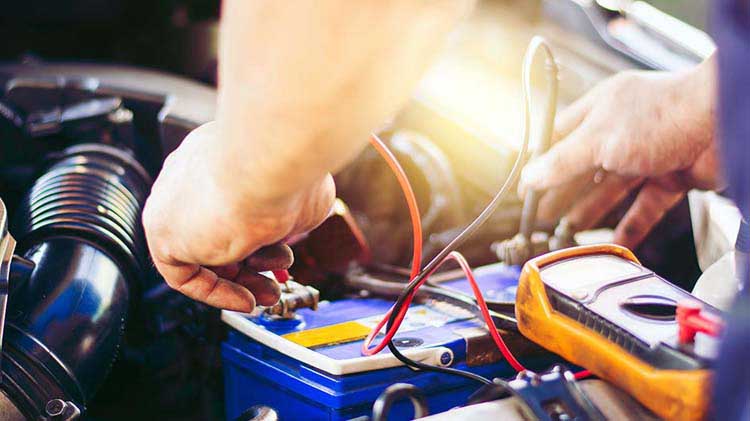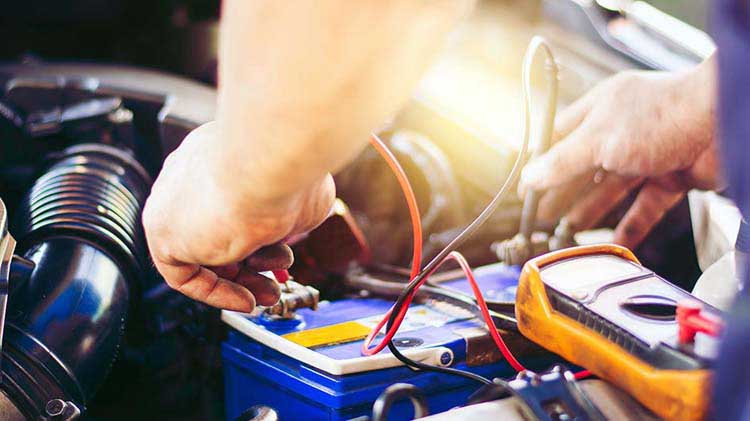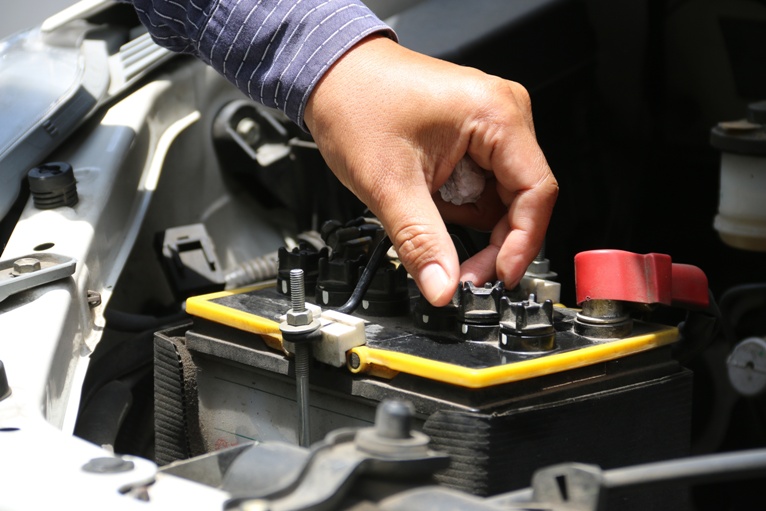Verbesserte Leistung und längere Lebensdauer der Herstellung von 100-Ah-Lithiumbatterien LiFePO4
Einführung:
Lithium-ion batteries, specifically Lithium Iron Phosphate (LiFePO4) batteries, have gained significant attention in recent years due to their high energy density, longer lifespan, and improved safety features compared to conventional battery technologies. This article focuses on the advancements made in enhancing the performance and extending the lifespan of 100Ah LiFePO4 batteries.
1. Enhanced Performance:
1.1 Cathode Material Optimization:
To improve the performance of LiFePO4 batteries, researchers have focused on optimizing the cathode material. By modifying the particle size and surface morphology, the electrochemical performance of the cathode material can be enhanced. The use of nano-sized LiFePO4 particles has shown improved electrochemical properties, including higher specific capacity, better rate capability, and enhanced cycling stability.
1.2 Electrolyte Composition:
The choice of electrolyte greatly impacts the performance of LiFePO4 batteries. Researchers have explored various electrolyte compositions to enhance battery performance. By using additives such as vinylene carbonate (VC) and fluoroethylene carbonate (FEC), the stability of the solid electrolyte interface (SEI) is improved, resulting in higher capacity retention and improved cycling stability.
1.3 Electrode Structure Engineering:
The electrode structure plays a crucial role in the performance of LiFePO4 batteries. Researchers have developed advanced electrode structures, such as hierarchical porous structures, to enhance the electrochemical performance. These structures provide increased active material utilization, shortened diffusion paths for lithium ions, and improved electron transport, resulting in higher capacity, better rate capability, and prolonged cycle life.
2. Extended Lifespan:
2.1 State of Charge (SoC) Management:
Proper management of the battery\’s state of charge is essential to extend its lifespan. Overcharging or deep discharging can lead to irreversible capacity loss and degradation of the electrode materials. Implementing advanced battery management systems that accurately monitor and control the SoC can significantly extend the lifespan of LiFePO4 batteries.
2.2 Temperature Control:
Temperature has a significant impact on the performance and lifespan of LiFePO4 batteries. Higher temperatures accelerate the degradation processes, leading to reduced capacity and shorter lifespan. Implementing effective thermal management systems that maintain the battery within the optimal temperature range can mitigate degradation, ensuring prolonged battery lifespan.

2.3 Cycle Life Improvement:
Researchers have focused on improving the cycle life of LiFePO4 batteries by implementing various strategies. These include the use of carbon-coated electrode materials to enhance the mechanical stability of the electrode and reduce particle cracking during cycling. Additionally, optimizing the electrode-electrolyte interface can minimize side reactions and improve the overall stability of the battery, resulting in extended cycle life.
Abschluss:
The advancements in enhancing the performance and extending the lifespan of 100Ah LiFePO4 batteries are promising for various applications, including electric vehicles, renewable energy storage systems, and portable electronics. The optimization of cathode materials, electrolyte composition, and electrode structures has shown improved electrochemical properties. Implementing proper state of charge management, temperature control, and cycle life improvement strategies can further extend the lifespan of these batteries. With ongoing research and development, LiFePO4 batteries are expected to play a crucial role in the future of energy storage and transportation.
-
 LiFePO4 batteries, also known as lithium iron phosphate batteries, are a type of rechargeable battery that is becoming increasingly popular due to their many advantages over traditional lead-acid batteries. In this article, we will explore some of the advantages of using LiFePO4 batteries. 1. Longer lifespan One of the most significant advantages of using LiFePO4 batteries is their...Weiterlesen
LiFePO4 batteries, also known as lithium iron phosphate batteries, are a type of rechargeable battery that is becoming increasingly popular due to their many advantages over traditional lead-acid batteries. In this article, we will explore some of the advantages of using LiFePO4 batteries. 1. Longer lifespan One of the most significant advantages of using LiFePO4 batteries is their...Weiterlesen -
 Electric bikes and scooters have gained popularity as an eco-friendly and affordable mode of transportation. They offer a convenient way to navigate through traffic and reduce carbon emissions. However, the key component that makes these vehicles run efficiently is the battery. In this article, we will explore the importance of a high-quality ebike/scooter battery and how it powers your ride...Weiterlesen
Electric bikes and scooters have gained popularity as an eco-friendly and affordable mode of transportation. They offer a convenient way to navigate through traffic and reduce carbon emissions. However, the key component that makes these vehicles run efficiently is the battery. In this article, we will explore the importance of a high-quality ebike/scooter battery and how it powers your ride...Weiterlesen -
 In der Welt der erneuerbaren Energien ist die Suche nach zuverlässigen und langlebigen Energiequellen stets im Gange. Eine solche Stromquelle, die in den letzten Jahren immer beliebter wurde, ist der 100-Ah-12-V-LiFePO4-Akku. Dieser Batterietyp gilt aufgrund seiner Vorteile gegenüber herkömmlichen Blei-Säure-Batterien als Durchbruch in der Batterietechnologie. Der 100Ah 12V...Weiterlesen
In der Welt der erneuerbaren Energien ist die Suche nach zuverlässigen und langlebigen Energiequellen stets im Gange. Eine solche Stromquelle, die in den letzten Jahren immer beliebter wurde, ist der 100-Ah-12-V-LiFePO4-Akku. Dieser Batterietyp gilt aufgrund seiner Vorteile gegenüber herkömmlichen Blei-Säure-Batterien als Durchbruch in der Batterietechnologie. Der 100Ah 12V...Weiterlesen -
 Da der technologische Fortschritt in beispiellosem Tempo voranschreitet, ist der Bedarf an effizienten und zuverlässigen Energiequellen von größter Bedeutung. Eine solche Energiequelle, die unsere Lebens- und Arbeitsweise revolutioniert hat, ist die Lithium-Ionen-Batterie. Diese Spitzentechnologie mit ihrer hohen Energiedichte, langen Lebensdauer und ihrem leichten Design ist zur bevorzugten Wahl für eine Vielzahl von Anwendungen geworden.Weiterlesen
Da der technologische Fortschritt in beispiellosem Tempo voranschreitet, ist der Bedarf an effizienten und zuverlässigen Energiequellen von größter Bedeutung. Eine solche Energiequelle, die unsere Lebens- und Arbeitsweise revolutioniert hat, ist die Lithium-Ionen-Batterie. Diese Spitzentechnologie mit ihrer hohen Energiedichte, langen Lebensdauer und ihrem leichten Design ist zur bevorzugten Wahl für eine Vielzahl von Anwendungen geworden.Weiterlesen -
 Lithiumbatterien sind wiederaufladbare Batterietypen, die aufgrund ihrer hohen Energiedichte, langen Lebensdauer und geringen Selbstentladungsrate in den letzten Jahren an Popularität gewonnen haben. Sie werden in einer Vielzahl von Anwendungen eingesetzt, von der Stromversorgung elektronischer Geräte bis hin zu Elektrofahrzeugen und erneuerbaren Energiesystemen. In diesem Artikel werden wir die Vorteile von Lithiumbatterien untersuchen und...Weiterlesen
Lithiumbatterien sind wiederaufladbare Batterietypen, die aufgrund ihrer hohen Energiedichte, langen Lebensdauer und geringen Selbstentladungsrate in den letzten Jahren an Popularität gewonnen haben. Sie werden in einer Vielzahl von Anwendungen eingesetzt, von der Stromversorgung elektronischer Geräte bis hin zu Elektrofahrzeugen und erneuerbaren Energiesystemen. In diesem Artikel werden wir die Vorteile von Lithiumbatterien untersuchen und...Weiterlesen -
 Portable car jump starter battery charger booster starter is a device that allows you to jump-start your car in case the battery is dead. It is a compact and portable device that is easy to carry around and can be used in case of an emergency. In this article, we will discuss the features, benefits, and usage of a portable...Weiterlesen
Portable car jump starter battery charger booster starter is a device that allows you to jump-start your car in case the battery is dead. It is a compact and portable device that is easy to carry around and can be used in case of an emergency. In this article, we will discuss the features, benefits, and usage of a portable...Weiterlesen -
 Introduction: As the global energy demand continues to rise, it has become imperative to explore innovative solutions to meet this growing need sustainably. The integration of smart grids with lithium batteries presents a promising avenue for revolutionizing energy management. This article delves into the potential benefits, challenges, and future prospects of this integration. 1. Benefits of integrating smart grids...Weiterlesen
Introduction: As the global energy demand continues to rise, it has become imperative to explore innovative solutions to meet this growing need sustainably. The integration of smart grids with lithium batteries presents a promising avenue for revolutionizing energy management. This article delves into the potential benefits, challenges, and future prospects of this integration. 1. Benefits of integrating smart grids...Weiterlesen

